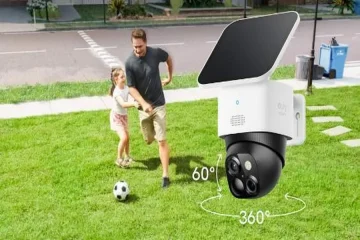When choosing a smartphone, one overlooked feature is the screen refresh rate. This specification can transform how users experience their devices, influencing everything from gaming to everyday browsing. The Honor 400 Pro, known for its eye-friendly display features like dynamic dimming and adaptive brightness, emphasizes the importance of selecting the right refresh rate. But why should you care about 60 Hz, 90 Hz, or 120 Hz options? Understanding these differences equips users to make informed decisions, ensuring optimal performance catered to individual preferences.
What Does Refresh Rate Mean for Smartphone Performance?
The Basics of Screen Refresh Rate
Refresh rate, measured in Hertz (Hz), indicates how many times the screen updates per second. For instance, a 120 Hz refresh rate means the display refreshes 120 times each second. It is crucial for fluid motion and smooth transitions across applications. The Honor 400 Pro’s refresh rate options showcase advanced technology made to enhance display clarity without compromising comfort by adjusting brightness dynamically to reduce eye strain.
How Refresh Rate Affects Visual Fluidity
Higher refresh rates offer smoother visuals. This becomes particularly noticeable when scrolling through social media or playing fast-paced games. A higher refresh rate, like 120 Hz, reduces motion blur, making actions appear more lifelike and immediate. The Honor 400 Pro takes visual fluidity to another level, ensuring users experience seamless transitions with its dynamic dimming display that adapts in real-time.
Understanding the Difference Between 60 Hz, 90 Hz, and 120 Hz
60 Hz is the traditional standard, providing stable performance for basic tasks. A shift to 90 Hz introduces a noticeable increase in smoothness, appealing to users who value visual quality. Meanwhile, 120 Hz delivers top-tier performance, ideal for gamers and media enthusiasts who demand the best. With adaptive brightness and color tone adjustments, devices like the Honor 400 Pro support these advanced refresh rates without causing visual fatigue, ensuring continued eye comfort.

The Pros of 60 Hz, 90 Hz, and 120 Hz
The Standard 60 Hz Experience
Most smartphones start with a 60 Hz display. This refresh rate is sufficient for regular activities. Its major advantage is energy efficiency, preserving battery life over extended use. Devices focusing on maximizing visual comfort employ features like natural tone displays at 60 Hz to ensure a comfortable viewing experience in various lighting conditions.
Upgrading to 90 Hz: A Balanced Option
Users seeking a middle ground should consider 90 Hz. It provides enhanced fluidity while maintaining reasonable battery consumption. This rate offers a noticeable difference in smoothness, especially in apps requiring rapid navigation. Making the 90 Hz option suitable for most users seeking improved visuals without sacrificing comfort.
120 Hz: Top-Tier Performance for High-End Users
For users desiring the best visual performance, 120 Hz is the way to go. This refresh rate is designed for high-end gaming and intensive media consumption. Experience unmatched fluidity as displays update faster than the average human eye can perceive. The Honor 400 Pro enhances this experience with innovative feature settings to ensure superior display quality without increasing visual fatigue.
Which Refresh Rate is Best for Different Use Cases?
For everyday tasks like calling, texting, or checking emails, a 60Hz refresh rate is sufficient, providing smooth performance without draining the battery. For gaming, both 90Hz and 120Hz displays, like the one on the HONOR 400 Pro, offer smoother transitions and more responsive gameplay, with 120Hz being ideal for fast-paced or competitive games. In multimedia and streaming, a 120Hz refresh rate enhances action scenes and sports, ensuring no frames are missed. The HONOR 400 Pro’s dynamic dimming optimizes comfort, delivering a superior viewing experience.
Impact on Battery Life and Performance
How Refresh Rate Affects Battery Consumption
Higher refresh rates typically lead to increased battery consumption. Jumping from 60 Hz to 90 Hz, or even 120 Hz, can shorten battery life as the display refreshes more frequently. However, smartphones like the Honor 400 Pro incorporate power-saving techniques that dynamically manage refresh rates and adaptive brightness, mitigating excessive battery usage while maintaining visual quality.
Managing Performance for Longer Battery Life
To extend battery life without sacrificing display quality, users can manage refresh settings according to their needs. Reducing screen brightness or using automatic brightness settings can also help. The Honor 400 Pro employs dual-sensor adaptive dimming to balance performance and power efficiency, making it a versatile choice for users who prioritize both display quality and effective power management.
Adaptive Refresh Rates and Battery Efficiency
Adaptive refresh rates can automatically adjust based on activity, balancing performance with battery conservation. This technology allows high refresh rates during gaming and lower rates during text reading, effectively extending battery life. The Honor 400 Pro’s adaptive display features ensure brightness and refresh rates are optimized for surrounding conditions, guaranteeing eye comfort and battery efficiency even with varying usage.
Conclusion
Choosing the right refresh rate for your smartphone involves balancing personal needs against performance and battery considerations. While 60 Hz is ideal for everyday tasks, 90 Hz offers improved visuals, and 120 Hz is perfect for high-end use cases. Innovations like the Honor 400 Pro’s eye-friendly features and dynamic adjustments accommodate any choice, reducing visual strain while maintaining optimal display quality. Select the refresh rate that aligns with your lifestyle, ensuring a satisfying and comfortable smartphone experience.




